Exploring Mytiline – Archaeological Museum and Kastro
After another stupendous breakfast at Hotel Lesvion, I turn my attention to more practical things. I’m conscious that I have just 4 nights booked here in Mytiline and have no plans beyond this, not even a flight home. Although I was just getting into the swing of the nomadic life style I appreciate that I do have a family at home and also a job! My priority today therefore, is to very reluctantly put a full stop onto the end of my trip. Or, as I will be ending my trip in Athens, maybe an exclamation mark would be more appropriate!
I’m really not ready to go home yet so I’ve decided to spend 14 nights on Lesvos and then an additional 3 nights in Athens. Who doesn’t love an Athens stay at the end of an island hopping trip? It’s the perfect distraction!
It has been so liberating travelling without a plan, not dissimilar to how I used to do it back in the day. Although booking accommodation is so easy nowadays, there was always something exhilarating about doing it ‘old school stylie’. Do you remember arriving at a port to be met by hoteliers waving laminated photographs of their rooms at you? I don’t remember ever looking at the photographs but at the faces of the people selling the rooms. If they had a nice smiley face then they probably had a nice room. It wasn’t an exact science and you never knew what you would get or where you would end up. I remember a time when my travelling companion and I were ushered into the back of a truck and taken to what felt like the back and beyond. I’d always choose to stay close to the port but on this occasion we seemed to be travelling quite far from the centre. The truck climbed a steep, dusty track and after about a 20 minutes we arrived at a small set of apartments sitting high on a hill. Although I can’t remember the place or even which island this was on, I do remember the amazing views from on top of the hill and that we had a wonderful stay there. Sometimes taking a chance can really pay off.
Anyway, back to today. After more than a month of heaving my luggage around the Northern Aegean I am beginning to feel it. This old Grandma isn’t as resilient as she used to be. The spirit is far more willing than the body is that’s for sure! With this in mind and after checking the bus timetable I’ve decided to spend 7 nights in Molyvos for a bit of R&R.
It’s true that I’ve been overwhelmed by the size of Lesvos. The bus service here isn’t as comprehensive as Chios but at least I’ll be able to explore Molyvos and it’s close neighbour Petra. When I come back to Mytiline next week maybe I can visit at least to one other village before I leave. There really is no point in trying to fly around the island trying to see it all. It’s an impossible task. I’ll just have to come back another time and my instincts tell me that I will be back in the near future. I know it has been said that it is essential to hire a car when staying on Lesvos but I absolutely refute that claim. Yes it will get you to places where the bus won’t, but sometimes there is a lot to be said for staying and exploring where you are. You may just see some things that those travelling by car don’t. Horses for courses.
With all of this said, I book my flights from Lesvos to Athens and then from Athens to home. As my confirmation receipts hit my inbox I begin to feel a little deflated. Anyway, I’ve done it now. The plaster is ripped off and I acknowledge that my stay here will come to an end. I’m already pre-empting a bad case of the post holiday blues!
There’s no point in thinking about that whilst I’m still here so onto the business of the day and exploring a bit more of Mytiline. I make my way out onto the harbour front where I can’t help but notice the very eclectic mix of architectural styles. The impressive church Agios Therapon with its large dome and three aisled basilica takes pride of place along the front. Close to Hotel Lesvion is a building that looks rather Germanic sitting next to something very neo-classical. I remembered reading that the eclectic architectural mix is a result of the island’s trading history.
Following the harbour around in an anticlockwise direction, I reach the marina where I can see there is a good choice of quayside taverna’s. I think that this will be the perfect place to eat tonight because I fancy something traditionally Greek and I do love a marina.
Whilst I’m here I can see that the Diagoras is moored up at the other end of the port. She’s another magnificent ship that I’m always delighted to see. Although I get a good view of her from here I decide to walk back to the other side of the port to say hello to her. A weird thing to do to an inanimate object but she has been an old friend for many years.
Before I reach the port close to the corner at the Blue Sky Hotel I turn around to look back at the water front. From here you really do get the best view and it also becomes clear that behind the cacophony of the ‘city’, the landscape morphs from concrete jungle into olive and pine clad hillside. There is something really satisfying about being within the buzz of the city and yet the mountains are in such close reach.
After saying hello to the Diagoras I take a walk to see the Statue of Liberty. Standing proudly on her plinth, she greets all visitors as they arrive into the port. This bronze scultpure was created in 1922 by the sculptor, Grigorios Zevgolis, and the local painter, Giorgios Iakovides. It is loosely based on the original in New York. Above the statue a pine forest rises up to the walls of the castle, one of the largest and most important in the Aegean. I have this in my sight to visit today – but not just yet.
Behind the port are some magnificent old mansion houses with all of the decayed grandeur that sets me alight. I’d give anything to see inside one of these houses. There is some interesting graffiti art in and around the port as well which I take a quick scootle at. From my initial observations of Mytiline the graffiti that I have seen in and around the town has a very strong pro Antifa and pro refugee support message. This fills my heart with joy. I know that Lesvos along with islands such as Chios have really shouldered a lot of the burden of supporting large numbers of refugees. I know that this hasn’t been without its controversies or problems but it gives me hope to see this kind of compassion shown for those less fortunate. A simplisitic view of something very complicated I know.
In between the mansion houses, a steep road leads me up aove the port and eventually to the entrance of the Archaeological Museum. I buy my ticket and for once I’m not asked if I’m over 65 and if I want to take advantage of the senior persons discount! Maybe just on Chios! :-). It seems like I’m the only visitor in the museum which has been the case for most of the museums I’ve visited on this trip. October is seems is a great time to travel if you want escape queues.
The new Archaeological Museum was purpose-built in the 1970s to house a collection of fine mosaics from the 2nd and 3rd century Roman administration of the city. It was built on the site of a Hellenistic temple of Aphrodite.
The first room displays superb floor-mosaics from a villa called the ‘House of Menander’ which refers to the 4th century bc Athenian writer of comedy. There is definitely a theatrical theme here with collections of poetry, song and theatrical masks. In the centre there is an image of Orpheus surrounded by zodiac of animals – signs.
The second room exhibits a floor mosaic from the dining-room of a wealthy house of the 2nd century. Framed with ivy leaves, this mosaic has beautiful images of exotic looking animals drinking from a vase.
Rooms 3, 4 and 5 are dedicated to sculpture and relief work made from local marble. The collections consists of funerary reliefs and portraits.
Room 6 houses what is the most sophisticated of the mosaics – the personification of a young man with lobster claws in his hair. This mosaic was originally located in the atrium of a house and where it was exposed to the sky, a small drain cover was incorporated within the mosaic to drain the water away into a cistern below. Absolute genius design.
Finally there is the exhibition room which displays a temporary exhibition entitled The Sirens of Flavour. This looks into the ancient eating and culinary habits of the inhabitants of Lesvos both rich and poor.
https://daysofart.gr/en/news/history-news/sirens-of-flavour-gastronomy-in-antiquity/
I give my thanks to the guardian that has directed me around the exhibitions today and she kindly points me towards the path that leads up to the kastro. A stony path takes me up above a pine clad hillside that drops all the way down to the harbour. Even from the outside of the kastro walls it is clear that this certainly is a castle of note. This is one of the largest castles in the Mediterannean.
The kastro has an interesting history and I did a quick trawl through Wikipedia to get a summary of its many iterations. This may help put into context what you will see whilst there.
- The site of the kastro may have originated as an Acropolis where either/or the temple of Apollo and Demeter were established.
- The original nucleas of the kastro was built in Byzantine times during the reign of Emporor Justinian 1. (527-565)
- In 1373 Francesco Gattilusio developed the kastro further.
- In 1462 the kastro was bombarded and partially destroyed by the Ottomans
- 1499-1503 the kastro suffered further damage during the Ottoman-Venetian War
- Shortly after Sultan Bayezid II repaired the damange and built 2 large round towers and new walls.
- 1643-44 Bekir Pasha undertook more modernisation work on the kastro and also repairs where an earthquake had caused damage. A moat was also created.
- 1677 the Ottomans added more fortifications using the Ancient Theatre of Mytilene as construction materials.
- 1756 Admiral Kuramadji added a polygonal tower near the harbour of Epano Skala.
- During the 19th century the function and character of the castle changed. The castle exhibited a more military character, as indicated by the barracks built near the madrasa and the neighboring gunpowder vault.
- On November 8, 1912 the island was captured by Greece during the First Balkan War.
- After 1912 the castle was used as a source of building material to construct refugee housing which gradually brought about its ruin. The intramural segment continued to be inhabited until shortly after the Second World War. The locals also established brothels (closed since the 1980s) in the Lower Castle.
At the Kiosk where I purchase my ticket I’m given a brief guide and map but the man in the booth tells me to start at the crypt and walk clockwise around the site.
Start at the crypt I do. Not only am I the only person in the crypt I’m the only visitor in the kastro. This makes my walk into the dark underground even more eerie! The steps down are very steep and require a firm grip onto the rail as I descend. I leave my bag at the top of the steps knowing that there is nobody around to take it.
Although a little bit spooky on my own, I can’t help but chuckle when I see the way that the tunnels have been lit. To me it looks as though there are two huge eyes starying at me like a mythical monster from the crypt! Monsters I can cope with. Anything of the rodent or reptilian persuasion I can’t. Not that I see anything like this down there but I keep my eyes peeled in all directions just in case. God, when did I become such a woos!
The space covers an area of 720 square metres with a series of vaulted ceilings and interconnected tunnels. Lighting and ventilation is achieved through a series of holes in the ceiling positioned at different angles to the sun to exploit the light as much as possible.
I resurface from the cool, dark dankness into the bright midday sun again and continue around the site. One of the buildings called a Tekke is a type of monastery used by the mystic brotherhood of Dervishes. The one here is said to have been part of a larger Tekke and originally had a courtyard. I take a slow amble around the armoury, the medresa and the remains of dwellings.
At the bottom of the site is the cistern which offers me another subterranean experience. Steep, deep stone steps take me down into a wide room where to the left, over a low wall is the cistern itself. Built during Roman times and then repaired by the Ottomans, the cistern kept the castle inhabitants in a supply of water, even whilst under seige. Note the dentil brickwork around the entrance to the cistern.
After exiting the cistern I climb the steps above it to view what I think is the ‘piece de resistance’ of the site and that’s the view from the castle walls. This overlooks the lower castle in which sits the Hammam which will be my next port of call.
I take a slow stroll back towards the entrance of the site. After several hours of being here I feel as though I’ve exhausted all of the key points of interest. I have thoroughly enjoyed my afternoon here and it is one of the most ineresting Kastro’s that I have visited.
I now want to visit the Ottoman Hammam that I could see from the castle walls. It is hard to guage how far it would be to walk. I ask the man at the kiosk the best way to get there. He tells me by car via the main road. Haha – everything in Greece has to be by car – even this short walk down to the other side of the harbour. However, there are two ways to walk there. The first by taking the coastal path around the kastro in an anticlockwise direction or via the main road from where I had entered the kastro grounds. I opt for the coastal path but am immediately headed off by two barking dogs. Yes I know they don’t look fierce but their barks may or may not be worse than their bites. I turn around and head down via the main road.
As the road drops down towards the northern harbour front, I notice a house on the left hand side. It’s the Mansion Halim Bey an Ottoman House that I’d spotted on Google maps a few days earlier. Unfortunately it’s closed. There is just a note on the gate with a phone number and an email address. I just peer through the railings at the garden instead! I get back on route to the hammam.
I had read that the hammam was temporarily closed. The man in the ticket office hadn’t mentioned anything when I’d asked him for directions so I’m assuming it is accessible. I had also read various online posts saying that although the hammam is closed, you can enter through the gate where it says ‘No entry’ and view it from the outside.
The No Entry sign is confusing because the coastal path is also a cycle path and is certainly getting some good use. The hammam also has a guard dog but it is docile and more intent on basking in the sun than seeing me off. It’s an attractive building with mutlicoloured sky lights. There is also a good view of the kastro from this side too.
I am now by the Northern Harbour where there is a little cluster of fish taverna’s. I walk a little further along the harbour front on Epano Skala, past the fish taverna’s until I come to the emotive statue of the Asia Minor Mother (Mikrasiatiki Manna). This beautiful bronze statue of mother and children looks out towards Asia Minor, the homeland that many refugees fled from during the Greek-Turkish War in 1919-22. There is a fantastic blog called Statues of Mytiline where you can read more about these beautiful work of art.
https://statuesofmytilene130164999.wordpress.com/section-2-statue-of-the-asia-minor-mother/
From the statue I had back towards Ermou, the main shopping street in Mytiline. I absolutely love this street. The choice of shops and taverna’s is fantastic. There are shops dedicated to household items, others to art. Some sell local produce and there are also lots of clothes shops. The clothes shops I will say from several visits down this street are mainly cheap and mass produced clothes from China and predominently aimed at young(er) people. I’m not sure I can see myself in leggings with peepholes all the way down the leg or crop tops. It’s interesting to browse what’s on offer even though I didn’t find anything that caught my eye. The one thing that HAS caught my eye is the fantastic graffiti art along this street. Tomorrow as it’s Sunday I think will be a really good time to come and explore when everything is a little less busy.
For now I’m going to head back to the hotel and get ready for my meal by the marina this evening. Fat Jimmy’s here I come!


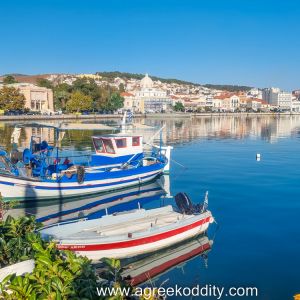
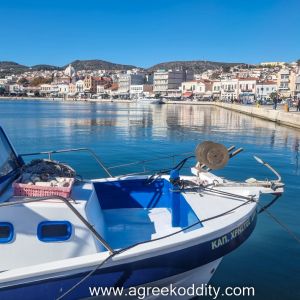

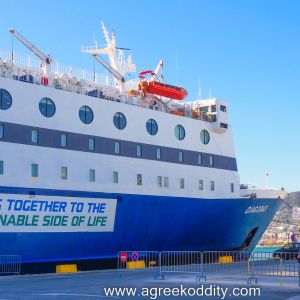
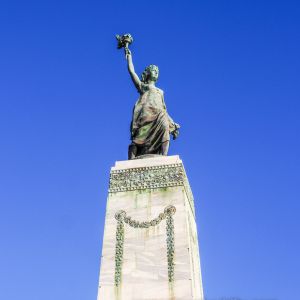

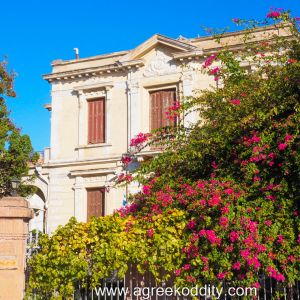



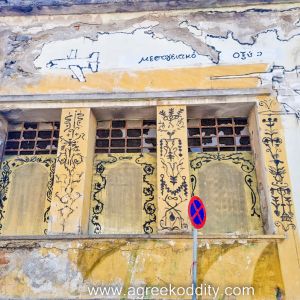
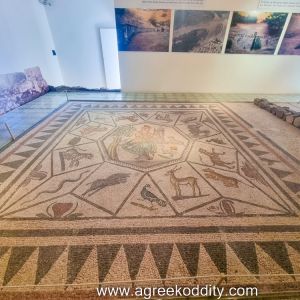
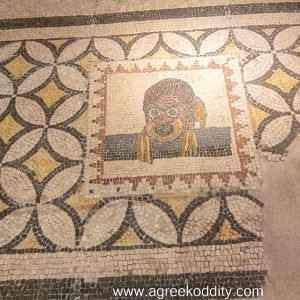
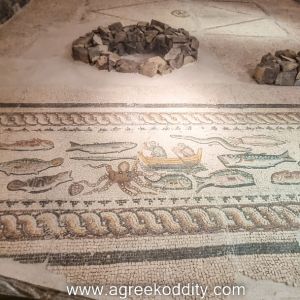
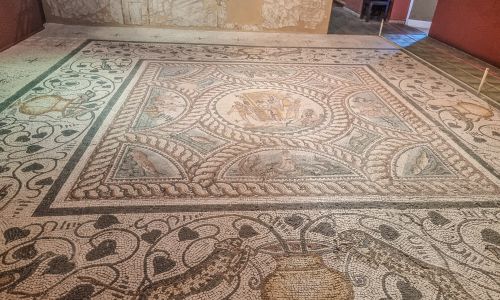
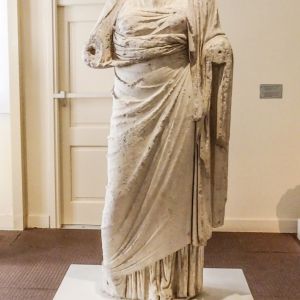
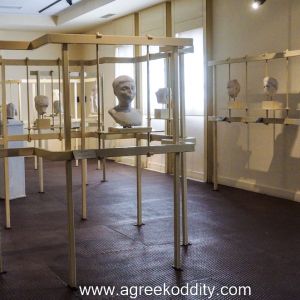
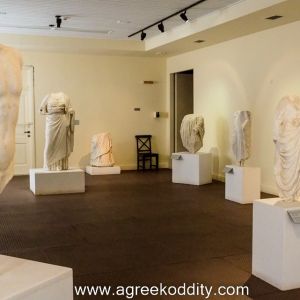


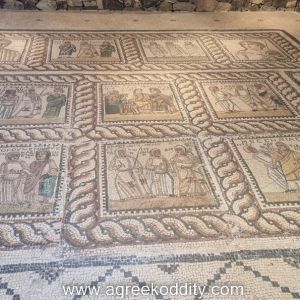
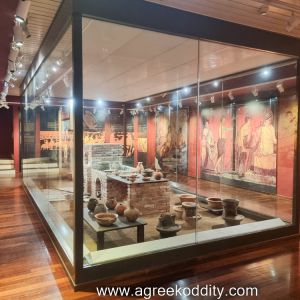
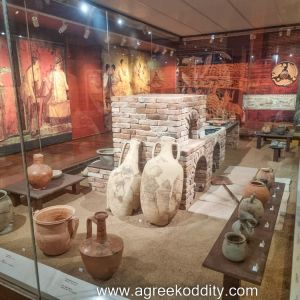
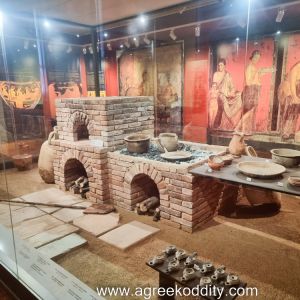
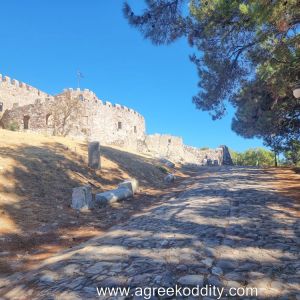
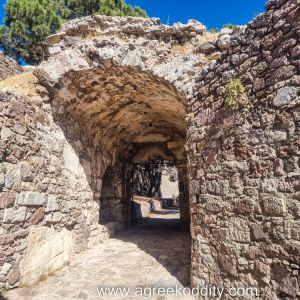
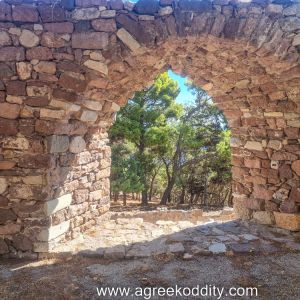
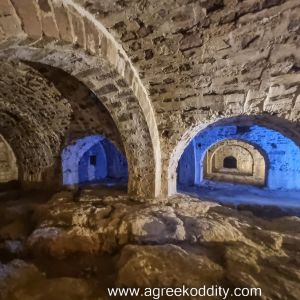
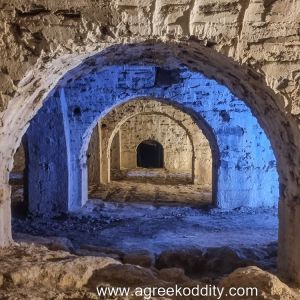
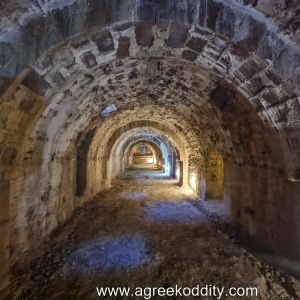

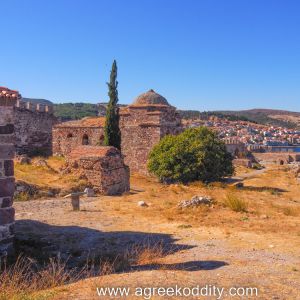
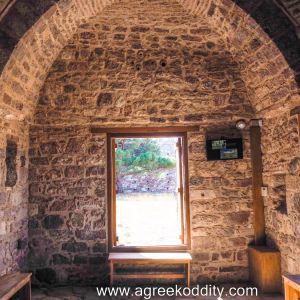

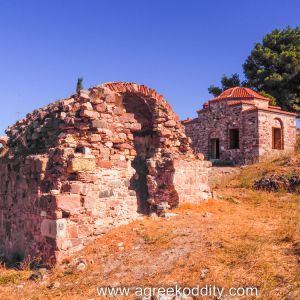


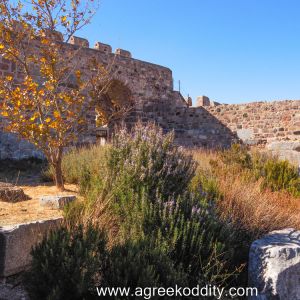
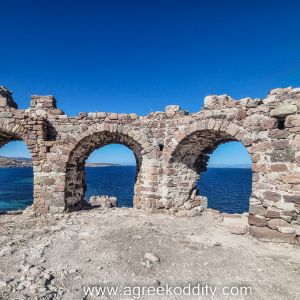

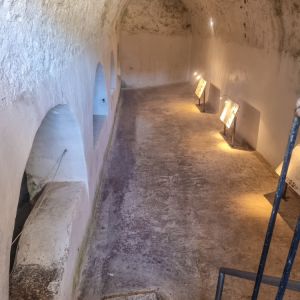
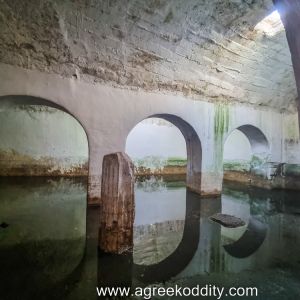

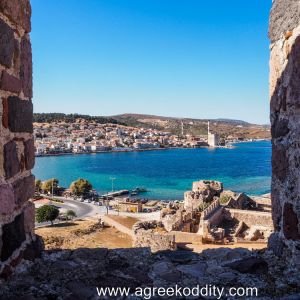


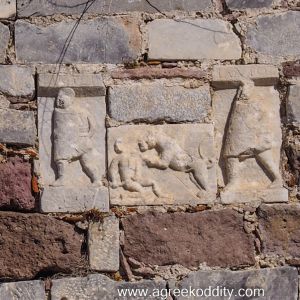
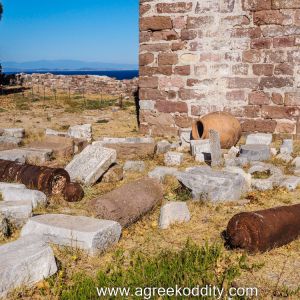
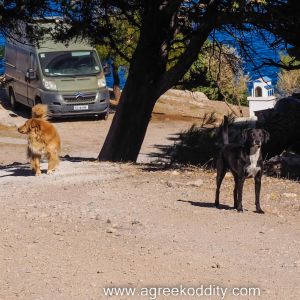


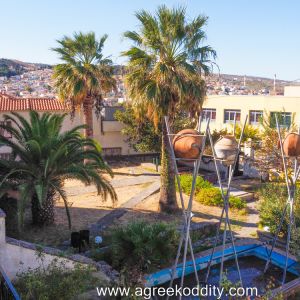


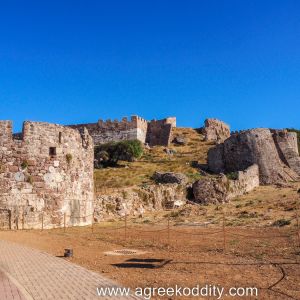




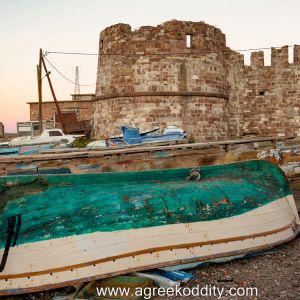
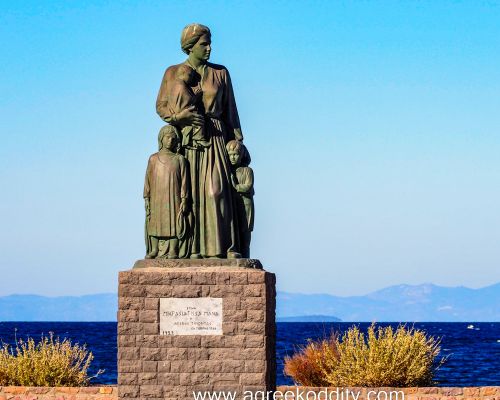






Wow, looks amazing, and what a lot of interesting information you have included. I would love to visit that Kastro and Myttelini of course. Love your travels xx
Haha Yes! This one felt like a thesis! I started it in November and have only just summed up the motivation to finish it. Lesvos is an absolute jewel. I hope you visit one day!